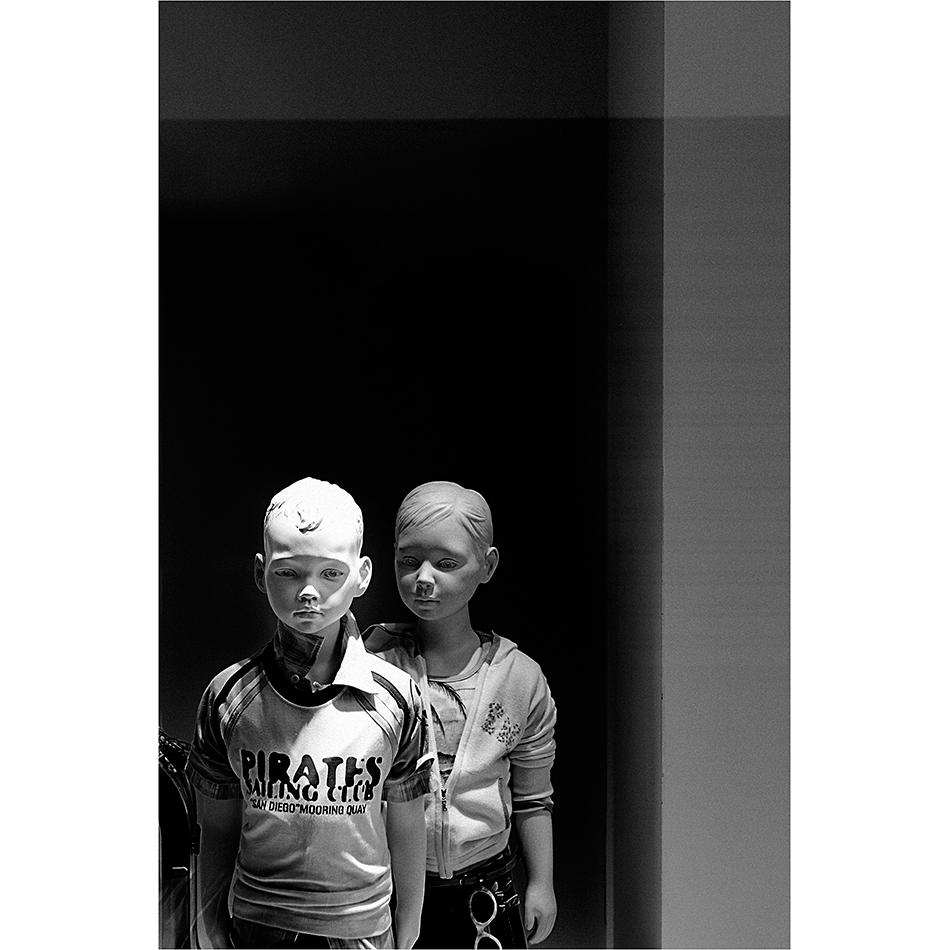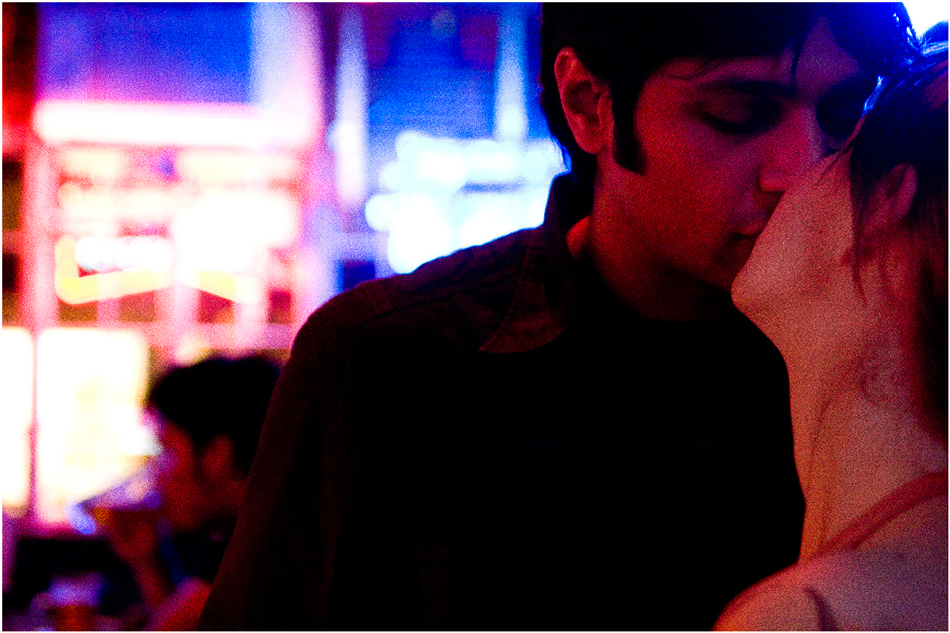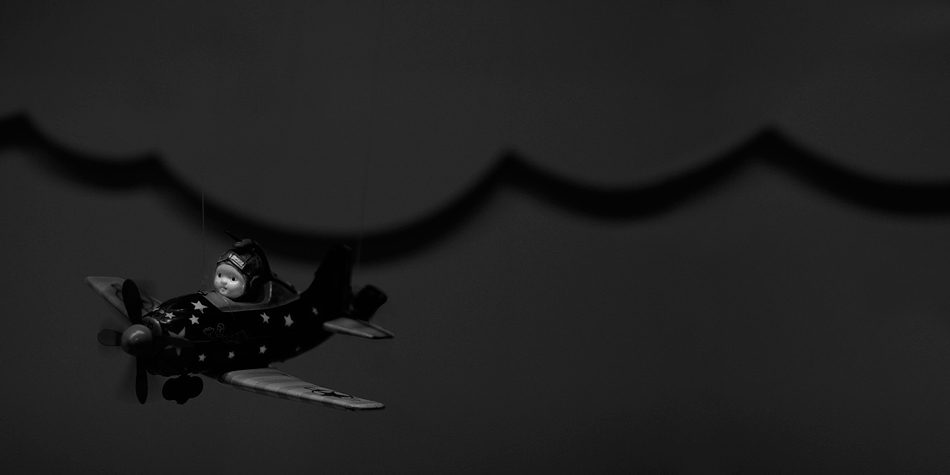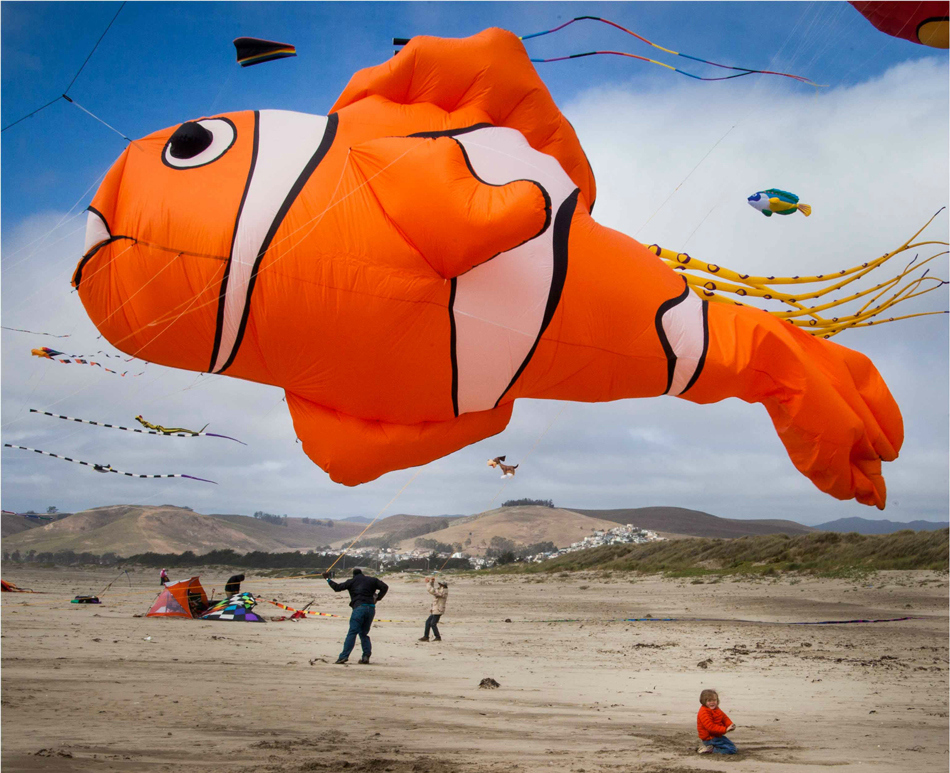Directing the Eye Part 4 - Size  When we talk about size in a photograph we are actually talking about relationships; either the relation of the subject to the frame, or its relation to something else in the image. One of the common misconceptions about this relationship is, ?Whatever the largest thing in the photograph is the subject of the photograph.? Often this is true, but it?s more accurate to say, ?The more we fill the frame with a subject, the more it will draw our eye.? Fill the frame with a flower, so much so I can see nothing else, and there can be little confusion as to what the image is about or where to look. That is why size can be a blunt instrument for drawing the eye when not used well. The largest thing in a photo is not always the subject ? sometimes the environment or background is the largest thing. Often, I will make the subject of my photograph the smallest thing in the image. Usually to tell a story about the subject?s place in the world. In these cases it is not the size of the subject drawing the eye, but pattern interruption. If the subject is so small against the background, we look at it because it breaks the pattern. In the photo below, the background is actually the ?largest? thing in the photograph, and it is not the subject.
When we talk about size in a photograph we are actually talking about relationships; either the relation of the subject to the frame, or its relation to something else in the image. One of the common misconceptions about this relationship is, ?Whatever the largest thing in the photograph is the subject of the photograph.? Often this is true, but it?s more accurate to say, ?The more we fill the frame with a subject, the more it will draw our eye.? Fill the frame with a flower, so much so I can see nothing else, and there can be little confusion as to what the image is about or where to look. That is why size can be a blunt instrument for drawing the eye when not used well. The largest thing in a photo is not always the subject ? sometimes the environment or background is the largest thing. Often, I will make the subject of my photograph the smallest thing in the image. Usually to tell a story about the subject?s place in the world. In these cases it is not the size of the subject drawing the eye, but pattern interruption. If the subject is so small against the background, we look at it because it breaks the pattern. In the photo below, the background is actually the ?largest? thing in the photograph, and it is not the subject.  Using size is not always a bad thing, filling the frame with your subject is one of the first techniques a photographer should learn. It simplifies images, and trains the mind into thinking what an image is about. It is a stepping stone to creating more complex images, which means you should start there - but don?t get stuck there. Used too often, it loses its power and becomes tiresome.
Using size is not always a bad thing, filling the frame with your subject is one of the first techniques a photographer should learn. It simplifies images, and trains the mind into thinking what an image is about. It is a stepping stone to creating more complex images, which means you should start there - but don?t get stuck there. Used too often, it loses its power and becomes tiresome.  A few years back it became very popular to use a fisheye or wide-angle lens to create human caricatures. The distortion of the lens would create large heads with small bodies; a very ?in-your-face? feel. The subject would invariably be an angry boss, or an overbearing school teacher. As a technique it is a great example of altering size relationships (the head vs the body) to create an emotional impact. We change these relationships to create a stronger photograph. This specific technique has been used, overused and abused, so much so, I can?t bring myself to include a visual example (do an image search for ?angry teacher,? and you will see plenty). Let me digress for a moment. One of the biggest mistakes people make in creating images where size is a subject, is the lack of a known reference point. Translated into English- we can?t estimate how big or small something is unless there is something else in the image we know the size of. We do an ok job of approximation, but keep in mind size is relative, so something is only big or small in relation to something else. Without a reference our brains can be deceived. It is why some of the biggest stars in Hollywood are some of the shortest people.
A few years back it became very popular to use a fisheye or wide-angle lens to create human caricatures. The distortion of the lens would create large heads with small bodies; a very ?in-your-face? feel. The subject would invariably be an angry boss, or an overbearing school teacher. As a technique it is a great example of altering size relationships (the head vs the body) to create an emotional impact. We change these relationships to create a stronger photograph. This specific technique has been used, overused and abused, so much so, I can?t bring myself to include a visual example (do an image search for ?angry teacher,? and you will see plenty). Let me digress for a moment. One of the biggest mistakes people make in creating images where size is a subject, is the lack of a known reference point. Translated into English- we can?t estimate how big or small something is unless there is something else in the image we know the size of. We do an ok job of approximation, but keep in mind size is relative, so something is only big or small in relation to something else. Without a reference our brains can be deceived. It is why some of the biggest stars in Hollywood are some of the shortest people.  If you have two subjects of the same relative size, they compete for attention. Find a way to make one of them different: reposition them so one is more in the foreground, or under different lighting conditions, alter the color, contrast, or focus to favor one subject over the other. These changes will prevent the elements from competing. Keep in mind some subjects you want to visually compete with each other; couples, siblings, identical twins, are a few things that could have equal value. This technique applies to any two similar sized subjects not part of a group.
If you have two subjects of the same relative size, they compete for attention. Find a way to make one of them different: reposition them so one is more in the foreground, or under different lighting conditions, alter the color, contrast, or focus to favor one subject over the other. These changes will prevent the elements from competing. Keep in mind some subjects you want to visually compete with each other; couples, siblings, identical twins, are a few things that could have equal value. This technique applies to any two similar sized subjects not part of a group.  When considering the size of elements in your photograph it is important to know groups of things will visually become one. A flock of birds, a crowd of people, if they are close enough, they will be thought of as one unit. The visual weight of your subject is the weight of the entire group. Photograph a couple, and they visually become one mass, so balance the image based on their total size.
When considering the size of elements in your photograph it is important to know groups of things will visually become one. A flock of birds, a crowd of people, if they are close enough, they will be thought of as one unit. The visual weight of your subject is the weight of the entire group. Photograph a couple, and they visually become one mass, so balance the image based on their total size.  Knowing what your image is about, knowing the ?story,? will inform you on how to photograph it. If you want to exaggerate the distance between two subjects, use a wide angle lens, or change your angle so they appear further apart. If you want to compress the distance between subjects, use a telephoto lens, or position the camera so they appear closer. There are many things you can never go back and fix in Photoshop: Lens selection, angles, etc? Knowing what the image is about will help you choose the proper techniques and equipment to create stronger images.
Knowing what your image is about, knowing the ?story,? will inform you on how to photograph it. If you want to exaggerate the distance between two subjects, use a wide angle lens, or change your angle so they appear further apart. If you want to compress the distance between subjects, use a telephoto lens, or position the camera so they appear closer. There are many things you can never go back and fix in Photoshop: Lens selection, angles, etc? Knowing what the image is about will help you choose the proper techniques and equipment to create stronger images.  For the final part of this series we will look at how to put all of these elements together. All images ©Thann Clark Be sure to check out the first three blogs in this series: Directing the Eye Part 1: Psychological Elements Directing the Eye Part 2: Contrast and Color Directing the Eye Part 3: Focus
For the final part of this series we will look at how to put all of these elements together. All images ©Thann Clark Be sure to check out the first three blogs in this series: Directing the Eye Part 1: Psychological Elements Directing the Eye Part 2: Contrast and Color Directing the Eye Part 3: Focus
 When we talk about size in a photograph we are actually talking about relationships; either the relation of the subject to the frame, or its relation to something else in the image. One of the common misconceptions about this relationship is, ?Whatever the largest thing in the photograph is the subject of the photograph.? Often this is true, but it?s more accurate to say, ?The more we fill the frame with a subject, the more it will draw our eye.? Fill the frame with a flower, so much so I can see nothing else, and there can be little confusion as to what the image is about or where to look. That is why size can be a blunt instrument for drawing the eye when not used well. The largest thing in a photo is not always the subject ? sometimes the environment or background is the largest thing. Often, I will make the subject of my photograph the smallest thing in the image. Usually to tell a story about the subject?s place in the world. In these cases it is not the size of the subject drawing the eye, but pattern interruption. If the subject is so small against the background, we look at it because it breaks the pattern. In the photo below, the background is actually the ?largest? thing in the photograph, and it is not the subject.
When we talk about size in a photograph we are actually talking about relationships; either the relation of the subject to the frame, or its relation to something else in the image. One of the common misconceptions about this relationship is, ?Whatever the largest thing in the photograph is the subject of the photograph.? Often this is true, but it?s more accurate to say, ?The more we fill the frame with a subject, the more it will draw our eye.? Fill the frame with a flower, so much so I can see nothing else, and there can be little confusion as to what the image is about or where to look. That is why size can be a blunt instrument for drawing the eye when not used well. The largest thing in a photo is not always the subject ? sometimes the environment or background is the largest thing. Often, I will make the subject of my photograph the smallest thing in the image. Usually to tell a story about the subject?s place in the world. In these cases it is not the size of the subject drawing the eye, but pattern interruption. If the subject is so small against the background, we look at it because it breaks the pattern. In the photo below, the background is actually the ?largest? thing in the photograph, and it is not the subject.  Using size is not always a bad thing, filling the frame with your subject is one of the first techniques a photographer should learn. It simplifies images, and trains the mind into thinking what an image is about. It is a stepping stone to creating more complex images, which means you should start there - but don?t get stuck there. Used too often, it loses its power and becomes tiresome.
Using size is not always a bad thing, filling the frame with your subject is one of the first techniques a photographer should learn. It simplifies images, and trains the mind into thinking what an image is about. It is a stepping stone to creating more complex images, which means you should start there - but don?t get stuck there. Used too often, it loses its power and becomes tiresome.  A few years back it became very popular to use a fisheye or wide-angle lens to create human caricatures. The distortion of the lens would create large heads with small bodies; a very ?in-your-face? feel. The subject would invariably be an angry boss, or an overbearing school teacher. As a technique it is a great example of altering size relationships (the head vs the body) to create an emotional impact. We change these relationships to create a stronger photograph. This specific technique has been used, overused and abused, so much so, I can?t bring myself to include a visual example (do an image search for ?angry teacher,? and you will see plenty). Let me digress for a moment. One of the biggest mistakes people make in creating images where size is a subject, is the lack of a known reference point. Translated into English- we can?t estimate how big or small something is unless there is something else in the image we know the size of. We do an ok job of approximation, but keep in mind size is relative, so something is only big or small in relation to something else. Without a reference our brains can be deceived. It is why some of the biggest stars in Hollywood are some of the shortest people.
A few years back it became very popular to use a fisheye or wide-angle lens to create human caricatures. The distortion of the lens would create large heads with small bodies; a very ?in-your-face? feel. The subject would invariably be an angry boss, or an overbearing school teacher. As a technique it is a great example of altering size relationships (the head vs the body) to create an emotional impact. We change these relationships to create a stronger photograph. This specific technique has been used, overused and abused, so much so, I can?t bring myself to include a visual example (do an image search for ?angry teacher,? and you will see plenty). Let me digress for a moment. One of the biggest mistakes people make in creating images where size is a subject, is the lack of a known reference point. Translated into English- we can?t estimate how big or small something is unless there is something else in the image we know the size of. We do an ok job of approximation, but keep in mind size is relative, so something is only big or small in relation to something else. Without a reference our brains can be deceived. It is why some of the biggest stars in Hollywood are some of the shortest people.  If you have two subjects of the same relative size, they compete for attention. Find a way to make one of them different: reposition them so one is more in the foreground, or under different lighting conditions, alter the color, contrast, or focus to favor one subject over the other. These changes will prevent the elements from competing. Keep in mind some subjects you want to visually compete with each other; couples, siblings, identical twins, are a few things that could have equal value. This technique applies to any two similar sized subjects not part of a group.
If you have two subjects of the same relative size, they compete for attention. Find a way to make one of them different: reposition them so one is more in the foreground, or under different lighting conditions, alter the color, contrast, or focus to favor one subject over the other. These changes will prevent the elements from competing. Keep in mind some subjects you want to visually compete with each other; couples, siblings, identical twins, are a few things that could have equal value. This technique applies to any two similar sized subjects not part of a group.  When considering the size of elements in your photograph it is important to know groups of things will visually become one. A flock of birds, a crowd of people, if they are close enough, they will be thought of as one unit. The visual weight of your subject is the weight of the entire group. Photograph a couple, and they visually become one mass, so balance the image based on their total size.
When considering the size of elements in your photograph it is important to know groups of things will visually become one. A flock of birds, a crowd of people, if they are close enough, they will be thought of as one unit. The visual weight of your subject is the weight of the entire group. Photograph a couple, and they visually become one mass, so balance the image based on their total size.  Knowing what your image is about, knowing the ?story,? will inform you on how to photograph it. If you want to exaggerate the distance between two subjects, use a wide angle lens, or change your angle so they appear further apart. If you want to compress the distance between subjects, use a telephoto lens, or position the camera so they appear closer. There are many things you can never go back and fix in Photoshop: Lens selection, angles, etc? Knowing what the image is about will help you choose the proper techniques and equipment to create stronger images.
Knowing what your image is about, knowing the ?story,? will inform you on how to photograph it. If you want to exaggerate the distance between two subjects, use a wide angle lens, or change your angle so they appear further apart. If you want to compress the distance between subjects, use a telephoto lens, or position the camera so they appear closer. There are many things you can never go back and fix in Photoshop: Lens selection, angles, etc? Knowing what the image is about will help you choose the proper techniques and equipment to create stronger images.  For the final part of this series we will look at how to put all of these elements together. All images ©Thann Clark Be sure to check out the first three blogs in this series: Directing the Eye Part 1: Psychological Elements Directing the Eye Part 2: Contrast and Color Directing the Eye Part 3: Focus
For the final part of this series we will look at how to put all of these elements together. All images ©Thann Clark Be sure to check out the first three blogs in this series: Directing the Eye Part 1: Psychological Elements Directing the Eye Part 2: Contrast and Color Directing the Eye Part 3: Focus






